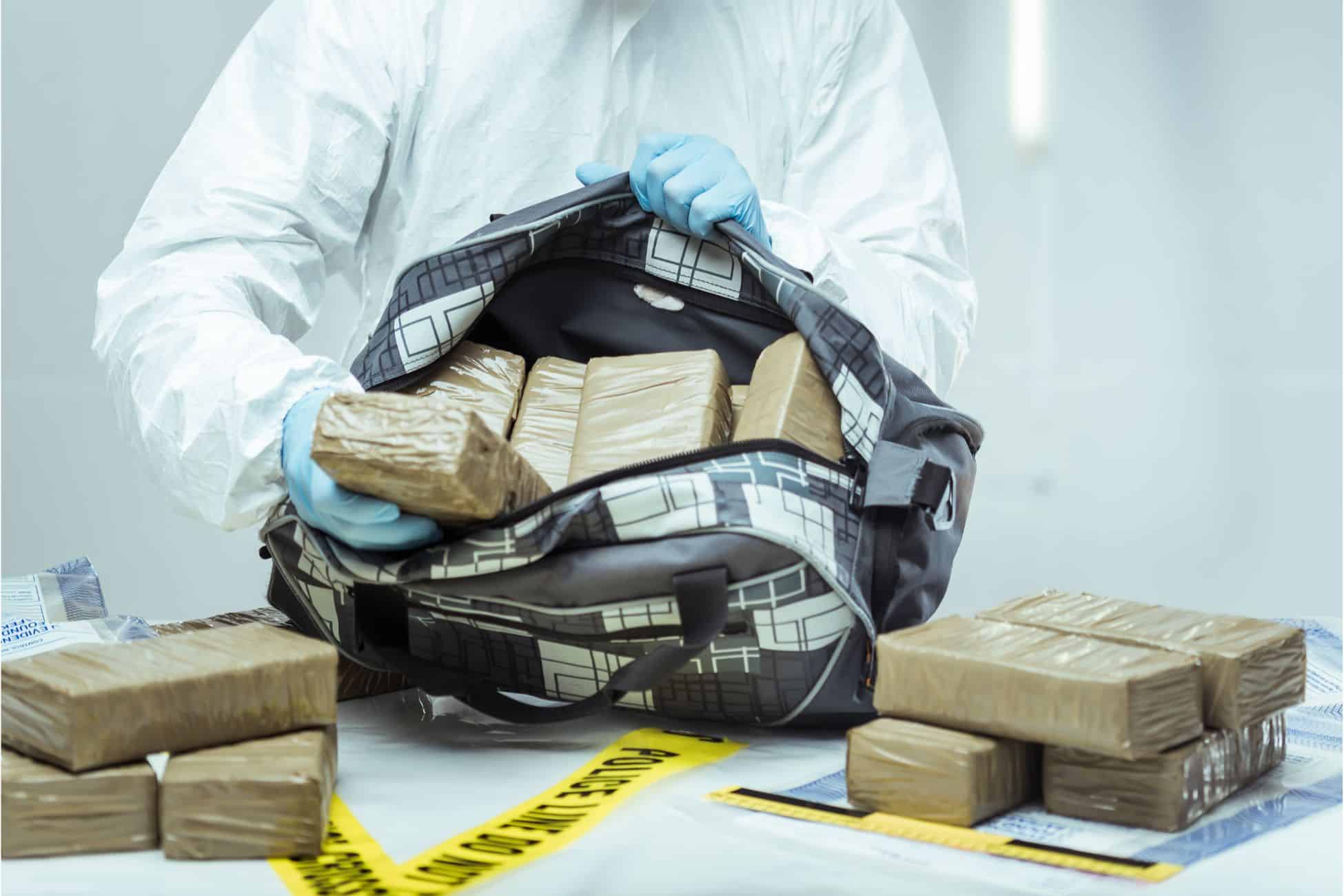Drug Production: Legal Ramifications of Producing or Manufacturing Illegal Substances in Canada
The production and manufacturing of illegal drugs can have serious legal consequences in Canada. The country has strict laws in place to combat the growing drug problem and any individuals caught producing or manufacturing illegal substances can face severe penalties.
Drug production is considered a serious criminal offense in Canada and is punishable by imprisonment, fines, and other legal consequences. It involves the creation of illegal substances such as cocaine, heroin, and methamphetamine, which are highly addictive and can have detrimental effects on an individual’s health and well-being. In this blog post, we will explore the legal ramifications of drug production and manufacturing in Canada, including the penalties for those convicted of this crime and the legal defenses that may be available to them. We will also examine the impact of drug production on Canadian society and the efforts being made to combat this issue.
What is the Controlled Drugs and Substances Act (CDSA) in Canada?
The Controlled Drugs and Substances Act (CDSA) is a federal law in Canada that regulates the production, distribution, and possession of controlled substances, including drugs and precursors, as well as medications that require a prescription. The CDSA was introduced in 1996 to combat illegal drug trafficking and abuse in Canada. The act classifies drugs into four schedules according to their potential for abuse, the degree of dependency they cause, and their therapeutic value.
Schedule I drugs have a high potential for abuse and no accepted medical use. These include heroin, LSD, and cocaine.
Schedule II drugs have a high potential for abuse but also have an accepted medical use. These include morphine, oxycodone, and fentanyl.
Schedule III drugs have a moderate potential for abuse and an accepted medical use. These include ketamine, anabolic steroids, and codeine.
Schedule IV drugs have a low potential for abuse and an accepted medical use. These include benzodiazepines, such as Valium and Xanax.
The CDSA provides penalties for those who manufacture, distribute, possess, or traffic controlled substances. Penalties range from fines to mandatory minimum sentences and can vary based on the drug and the amount involved, as well as previous convictions. In addition to criminal charges, individuals may also face administrative penalties, such as license suspension or revocation.
What are the penalties for drug offenses in Canada?
Drug offenses in Canada are taken very seriously and can result in severe penalties. The penalties for drug offenses depend on several factors, including the type and quantity of drug involved, the offender’s criminal record, and the circumstances of the offense.
Under the Controlled Drugs and Substances Act, drugs are classified into four schedules based on their potential for abuse, their medical value, and other factors. Schedule I drugs, such as heroin and cocaine, are considered the most dangerous and have the harshest penalties. Schedule IV drugs, such as benzodiazepines, have a lower potential for abuse and are subject to less severe penalties.
Possession of a controlled substance is an offense under the Controlled Drugs and Substances Act, and penalties can range from fines to imprisonment, depending on the circumstances. For example, if an individual is found in possession of less than 30 grams of cannabis, the penalty could be a fine of up to $1,000 for a first offense. However, if an individual is found in possession of a Schedule I drug, such as cocaine, the penalty could be up to seven years in prison.
Conviction for drug trafficking or distribution can result in even more significant penalties, including mandatory minimum sentences. The penalties for drug trafficking depend on the type and quantity of the drug involved, and penalties can range from a minimum of one year in prison to life imprisonment.

What are the fines for illegal drug transportation in Canada?
The penalties for transportation of illegal drugs in Canada depend on the type of drug involved and the amount being transported. The Controlled Drugs and Substances Act classifies drugs into four schedules based on their potential for abuse and medical use.
Schedule I drugs, such as heroin and cocaine, are considered to have the highest potential for abuse and no medical use. Transportation of these drugs can result in a maximum penalty of life imprisonment and a minimum fine of $1,000 for a first offense.
Schedule II drugs, such as cannabis and ecstasy, have a lower potential for abuse and some recognized medical uses. Transportation of these drugs can result in a maximum penalty of life imprisonment and a minimum fine of $1,000 for a first offense.
Schedule III drugs, such as codeine and ketamine, have a lower potential for abuse than Schedule I and II drugs and are used for medical purposes. Transportation of these drugs can result in a maximum penalty of 10 years imprisonment and a minimum fine of $1,000 for a first offense.
Schedule IV drugs, such as benzodiazepines and anabolic steroids, have the lowest potential for abuse and are used for medical purposes. Transportation of these drugs can result in a maximum penalty of three years imprisonment and a minimum fine of $1,000 for a first offense.
In addition to fines and imprisonment, a conviction for drug transportation can result in mandatory minimum sentences, forfeiture of assets, and restrictions on travel and employment.
What is the legal age for sale or distribution of drugs in Canada?
The legal age for sale or distribution of drugs in Canada can vary depending on the specific drug and its classification under the Controlled Drugs and Substances Act (CDSA). The CDSA is the federal law that regulates the production, distribution, and possession of drugs in Canada.
Under the CDSA, drugs are classified into different schedules based on their potential for abuse and other factors. Schedule I drugs, such as heroin and cocaine, are considered to have a high potential for abuse and no recognized medical use, and are therefore prohibited under the Act. Schedule II, III, and IV drugs, such as prescription painkillers and sedatives, have lower potential for abuse and limited medical use, and are available for lawful use with a prescription.
The minimum age for the sale or distribution of drugs also varies by province or territory, but it generally follows the legal drinking age. In most provinces and territories, the legal drinking age is 19, which means that the legal age for purchasing Schedule II, III, and IV drugs is also 19. However, in Alberta, Manitoba, and Quebec, the legal drinking age is 18, which means that the legal age for purchasing these drugs is also 18.
It is important to note that selling or distributing drugs without a license is illegal and can result in serious criminal charges and mandatory minimum sentences, especially for Schedule I drugs. Likewise, possession of drugs for the purpose of trafficking or distribution can lead to harsh penalties, including imprisonment and significant fines.
What are the laws related to drug trafficking in Canada?
Drug trafficking is a serious offence in Canada and is governed by the Controlled Drugs and Substances Act (CDSA). The CDSA is the primary piece of legislation that controls the production, distribution, and possession of drugs in Canada. It classifies drugs into five schedules, namely Schedule I, II, III, IV, and V, with Schedule I being the most dangerous and addictive.
Schedule I drugs, such as heroin and cocaine, are considered to have a high risk of abuse and addiction and have no acceptable medical use. Schedule II drugs, such as cannabis and amphetamines, have a high potential for abuse and dependence, but may have medical use. Schedule III drugs, such as anabolic steroids and ketamine, have a lesser potential for abuse and dependence than Schedule II drugs. Schedule IV drugs, such as benzodiazepines, have a low risk of abuse and dependence but can still be harmful. Schedule V drugs, such as cough syrup with codeine, have the lowest risk of abuse and dependence.
The sanctions for drug trafficking differ according to the gravity of the crime, the kind of drug implicated, and the perpetrator’s prior criminal background. For Schedule I offenses, like trafficking heroin or cocaine, the compulsory minimum sentence is one year of incarceration, while the maximum sentence is life imprisonment. For Schedule II and Schedule III offenses, involving trafficking of substances like cannabis or ketamine, the harshest sentence is life imprisonment. In cases of Schedule IV and Schedule V offenses, which include trafficking in substances like benzodiazepines or precursor chemicals, the penalties may be less severe.

What is the maximum imprisonment for drug offenses in Canada?
The maximum imprisonment for drug offenses in Canada varies depending on the severity of the offense and the schedule of the drug involved.
Under the Controlled Drugs and Substances Act (CDSA), drugs are classified into 4 schedules – Schedule I, II, III, and IV. Schedule I drugs are considered the most dangerous and have the highest potential for abuse and addiction, while Schedule IV drugs are considered the least dangerous and have the lowest potential for abuse and addiction.
For Schedule I drugs, the maximum imprisonment for trafficking, possession for the purpose of trafficking, and production is life imprisonment, while the maximum imprisonment for possession is 7 years.
For Schedule II drugs, the maximum imprisonment for trafficking, possession for the purpose of trafficking, and production is 10 years, while the maximum imprisonment for possession is 3 years.
For Schedule III drugs, the maximum imprisonment for trafficking, possession for the purpose of trafficking, and production is 10 years, while the maximum imprisonment for possession is 1 year.
For Schedule IV drugs, the maximum imprisonment for trafficking, possession for the purpose of trafficking, and production is 3 years, while the maximum imprisonment for possession is 6 months.
It is important to note that mandatory minimum sentences may also apply for certain drug offenses, depending on the quantity and type of drug involved, as well as the offender’s previous criminal record.
In conclusion, the Controlled Drugs and Substances Act (CDSA) plays a crucial role in governing drug offenses in Canada, with penalties and imprisonment terms varying according to the drug’s schedule and the nature of the offense. Ranging from Schedule I, the most dangerous drugs with high potential for abuse and addiction, to Schedule IV, the least dangerous drugs with a low potential for abuse and addiction, the severity of punishment increases accordingly. It is essential to recognize that mandatory minimum sentences may be imposed for specific drug offenses, taking into account factors such as the type and quantity of the drug involved, and the offender’s criminal history. Understanding and adhering to these legal guidelines are vital in promoting a safer society and reducing the impact of drug-related offenses in Canada.
Are there any exemptions to the Controlled Drugs and Substances Act (CDSA) in Canada?
The Controlled Drugs and Substances Act (CDSA) is a federal law in Canada that regulates the production, sale, and possession of controlled substances. The CDSA classifies drugs into several schedules based on their potential for abuse, addiction, and medical value. Schedule I is the most tightly controlled, while Schedule IV has the least restrictions.
While the CDSA is a strict law, there are some exemptions that allow for limited use or possession of controlled substances in specific circumstances. One example is the medical use of controlled substances, which is allowed with a prescription from a licensed healthcare provider.
Another exemption is for research purposes, which allows scientists to study controlled substances under strict regulations and permits. However, it is important to note that all research involving controlled substances must adhere to strict ethical and safety guidelines and be approved by regulatory authorities.
There are also some exemptions for possession or use of controlled substances for religious purposes. For example, members of the Native American Church in Canada are allowed to use peyote, a Schedule I controlled substance, in religious ceremonies.
It is important to note that these exemptions are limited and strictly regulated. Possession or distribution of controlled substances outside of these exemptions can result in serious legal consequences, including conviction and mandatory minimum sentences.
In summary, while there are some exemptions to the Controlled Drugs and Substances Act in Canada, they are limited and strictly regulated. It is important to understand and abide by the law to avoid legal consequences.
How do drug laws in Canada differ from those in other countries?
Drug laws in Canada are similar to those in many other countries, as they are designed to regulate and control the distribution, use, and possession of certain drugs. However, there are some key differences that set Canada apart from other nations when it comes to drug laws.
One major difference is that Canada has a system of controlled substances that divides drugs into different categories, or schedules, based on their potential for harm and abuse. Schedule I drugs are considered the most dangerous and have a high potential for abuse, while Schedule IV drugs are considered the least dangerous and have a low potential for abuse. This system helps to regulate the distribution and possession of drugs in a way that is appropriate for their level of risk.
Another key difference is that Canada has mandatory minimum sentences for certain drug offenses, including trafficking and production. This means that individuals convicted of these offenses must serve a minimum amount of time in prison before they can be released. This is designed to deter individuals from engaging in drug-related activities and to protect society from the harms associated with drug trafficking and distribution.
Additionally, Canada has implemented a number of measures to address drug addiction and substance abuse, including harm reduction strategies like safe injection sites and the provision of opioid replacement therapy. This approach is focused on helping individuals who struggle with addiction to access the support and treatment they need, rather than punishing them for their addiction.
Overall, drug regulations in Canada bear resemblances to those in numerous other countries, as they aim to oversee and manage the distribution, utilization, and possession of specific drugs. Nonetheless, Canada stands out from other nations in certain aspects of its drug laws.
What are the implications of the Controlled Drugs and Substances Act (CDSA) on illegal drugs in Canada?
The Controlled Drugs and Substances Act (CDSA) is a federal legislation that regulates the production, distribution, and possession of controlled drugs and substances in Canada. The Act categorizes these substances into four schedules (I to IV) based on their potential for harm and abuse.
Schedule I includes the most dangerous drugs, such as heroin and cocaine, with the highest potential for abuse and addiction. Possessing, trafficking, or distributing these drugs can result in severe penalties, including mandatory minimum sentences of imprisonment.
Schedule II includes drugs with a lower potential for harm, such as cannabis and amphetamines. Possession and distribution of these drugs are still illegal, but penalties are less severe than those for Schedule I drugs.
Schedule III includes drugs that are used for medical purposes but can still be abused, such as codeine and barbiturates. Possession and distribution of these drugs are regulated and require a prescription.
Schedule IV includes drugs with a low potential for harm and abuse, such as tranquilizers and some prescription medications. Possession and distribution of these drugs are also regulated and require a prescription.
The CDSA has significant implications for illegal drugs in Canada, as it provides a framework for regulating and controlling their production, distribution, and possession. The Act aims to prevent the harm and negative consequences associated with drug use, such as addiction, overdose, and criminal activity.
Persons found guilty of drug-related offenses under the CDSA confront severe repercussions, including monetary penalties, incarceration, and acquiring a criminal record.

Conclusion
In conclusion, the production or manufacturing of illegal substances in Canada is a serious offense that carries significant legal ramifications. Governed by the Controlled Drugs and Substances Act (CDSA), the penalties associated with drug production can include substantial fines, lengthy imprisonment, and long-lasting consequences such as a criminal record. As Canada continues to combat the issues surrounding drug production and distribution, it is crucial for individuals to understand the severity of these offenses and the importance of adhering to the country’s drug laws. By being aware of the legal consequences and actively working to reduce drug production and its associated harm, Canada aims to promote a safer and healthier society for all its citizens.
Need help with a drug related charge? Get in touch with our expert lawyers and let’s get defended.
Contact Calvin Barry Today.
Contact an experienced criminal defence lawyer in Toronto to fight for your case.